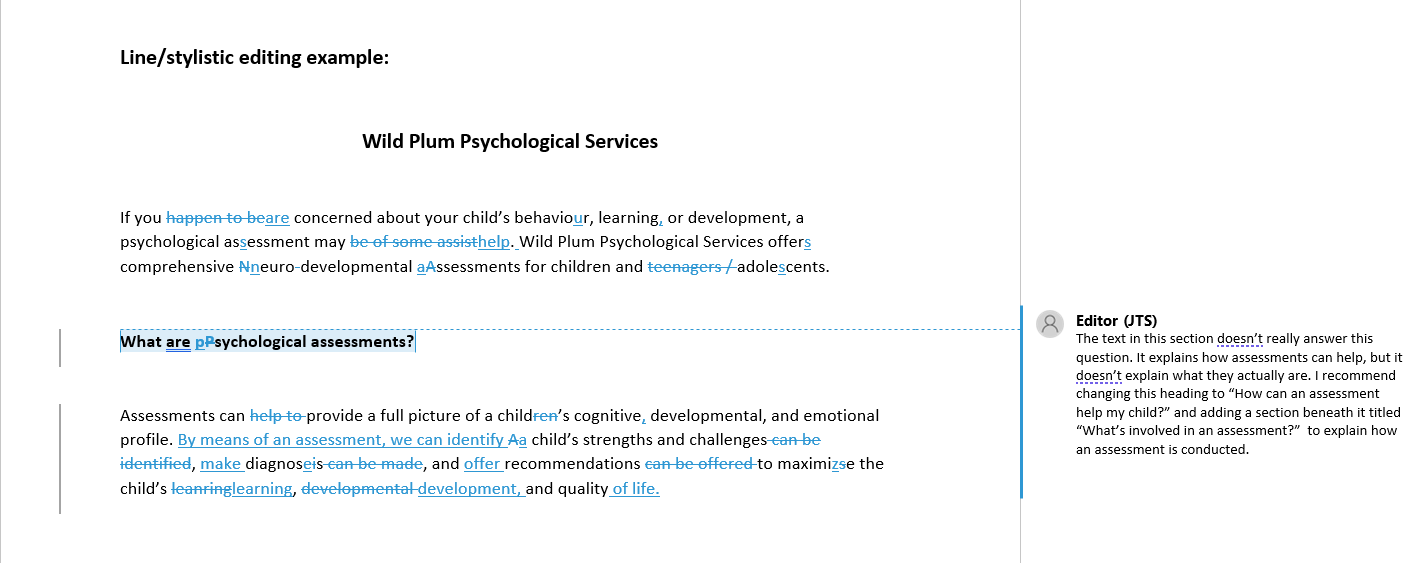Do you think editing is just fixing spelling errors and ironing out errant punctuation? It's so much more than that!
Here are some examples to illustrate the various levels of editing. Click on the images to expand them for a closer look.
Here are some examples to illustrate the various levels of editing. Click on the images to expand them for a closer look.
Original Text
Here is some unedited text that needs a bit of polishing.
Here is some unedited text that needs a bit of polishing.
Copy Editing
Copy editing is editing for correctness in spelling, grammar, and punctuation, and ensuring accuracy, completeness, and consistency of editorial style. Here is an example of what copy editing looks like:
Copy editing is editing for correctness in spelling, grammar, and punctuation, and ensuring accuracy, completeness, and consistency of editorial style. Here is an example of what copy editing looks like:
Substantive Editing
Substantive editing is editing the text at a deeper level while also looking at the big picture. The editor assesses and shapes the overall text for structure, logic, and flow of argument and edits at the sentence level to improve clarity and flow. Put simply, substantive editing ensures the document as a whole a. makes sense, and b. sounds good. In the example below, you can see the heavier changes and wording adjustments substantive editors make to the text, as well as raising big-picture queries and making suggestions for organizational changes.
Substantive editing is editing the text at a deeper level while also looking at the big picture. The editor assesses and shapes the overall text for structure, logic, and flow of argument and edits at the sentence level to improve clarity and flow. Put simply, substantive editing ensures the document as a whole a. makes sense, and b. sounds good. In the example below, you can see the heavier changes and wording adjustments substantive editors make to the text, as well as raising big-picture queries and making suggestions for organizational changes.
Proofreading
Proofreading is the final step in a document's production. After the text has been through a round of copy editing and has been laid out in its final form (in this case, a PDF flyer), the proofreader analyzes the typeset text for any remaining typographical errors or layout problems.
Proofreading is the final step in a document's production. After the text has been through a round of copy editing and has been laid out in its final form (in this case, a PDF flyer), the proofreader analyzes the typeset text for any remaining typographical errors or layout problems.
Still not sure what you need? Get in touch with me to discuss your project and see how I can help.
Services |
Company |
|




